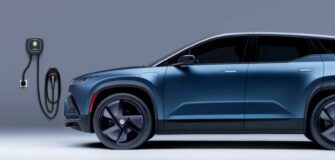Zero Emission Cars in the Near Future-Revolutionizing Sustainable Transportation

The urgency to combat climate change and reduce carbon emissions has spurred remarkable advancements in the automotive industry. As we move towards a more sustainable future, the concept of zero-emission cars has gained significant momentum. These vehicles, powered by renewable energy sources, promise to revolutionize transportation and mitigate the environmental impact of traditional combustion engine vehicles. In this article, we will explore the exciting developments and potential of zero-emission cars in the near future.
The Rise of Electric Vehicles
Electric vehicles (EVs) have already made significant strides in recent years, with major automakers introducing affordable and practical models to the market. Rechargeable batteries power EVs and emit zero tailpipe emissions, making them an attractive alternative to conventional gasoline-powered vehicles. Advancements in battery technology have led to improved driving ranges, faster charging times, and increased affordability, addressing some of the initial barriers to widespread EV adoption.
Government Support and Infrastructure Development
Governments worldwide recognize the importance of transitioning to zero-emission vehicles and have implemented supportive policies and initiatives. Incentives such as tax credits, grants, and subsidies are being offered to encourage consumers to make the switch to electric cars. Additionally, governments are investing in the development of charging infrastructure, including public charging stations and fast-charging networks, to alleviate concerns regarding range anxiety. These initiatives foster consumer confidence and provide the necessary infrastructure for zero-emission cars to flourish.
Technological Advancements: Beyond Electric
While electric vehicles dominate the zero-emission landscape, other technologies are also emerging as viable alternatives. Hydrogen fuel cell vehicles (FCVs) have gained attention due to their potential for long-range travel and fast refueling times. FCVs use hydrogen gas to produce electricity, emitting only water vapor as a byproduct. Although still in the early stages of commercialization, FCVs show promise and could become significant players in the zero-emission market in the coming years.
Transitioning the Masses: Affordability and Accessibility
To achieve widespread adoption, zero-emission cars must become more accessible and affordable. The production costs of electric vehicles are gradually decreasing as economies of scale come into play and battery technology continues to improve. Furthermore, advancements in manufacturing processes, such as 3D printing, could contribute to cost reductions and make zero-emission cars more affordable for the average consumer.
Additionally, the secondhand market for electric vehicles is growing, providing a more cost-effective option for those on a tighter budget. As more EVs enter the market and their lifespan extends, a robust used EV market will help accelerate the transition to zero-emission transportation.
Environmental Benefits: Beyond Zero Emissions
Beyond eliminating tailpipe emissions, zero-emission cars offer numerous environmental benefits. As the electricity grid becomes greener with increased renewable energy generation, the carbon footprint of electric vehicles decreases further. Additionally, the reduction in noise pollution associated with electric vehicles improves the overall quality of life in urban areas. By transitioning to zero emission cars, we can mitigate the detrimental effects of traditional transportation on our planet and create cleaner and more livable cities.
Challenges and Future Outlook
While the future of zero-emission cars is bright, several challenges remain. The expansion of charging infrastructure is crucial to support the growing demand for electric vehicles. Governments, in collaboration with private companies, must invest in a robust network of charging stations at home and in public spaces to ensure convenience and peace of mind for EV owners.
Moreover, the environmental impact of manufacturing batteries and disposing of them at the end of their life cycle needs to be addressed. Research into alternative battery chemistries and recycling technologies is essential to minimize the ecological footprint of zero-emission vehicles.
Looking ahead, the automotive industry is poised for an electric revolution. Major automakers are investing heavily in research and development,and new players are entering the market with innovative zero emission solutions. As battery technology improves, driving ranges increase, charging times decrease, and costs continue to decline, zero-emission cars will become the norm rather than the exception.
Zero-emission cars represent a significant step forward in our pursuit of sustainable transportation. With the rapid advancement of electric vehicles and emerging technologies like hydrogen fuel cells, we have the means to transition away from fossil fuel dependency and mitigate the environmental impact of traditional vehicles. The future of zero-emission cars looks promising through supportive government policies, infrastructure development, and technological advancements. By embracing these vehicles, we can pave the way for a cleaner, greener, and more sustainable future for generations to come.









